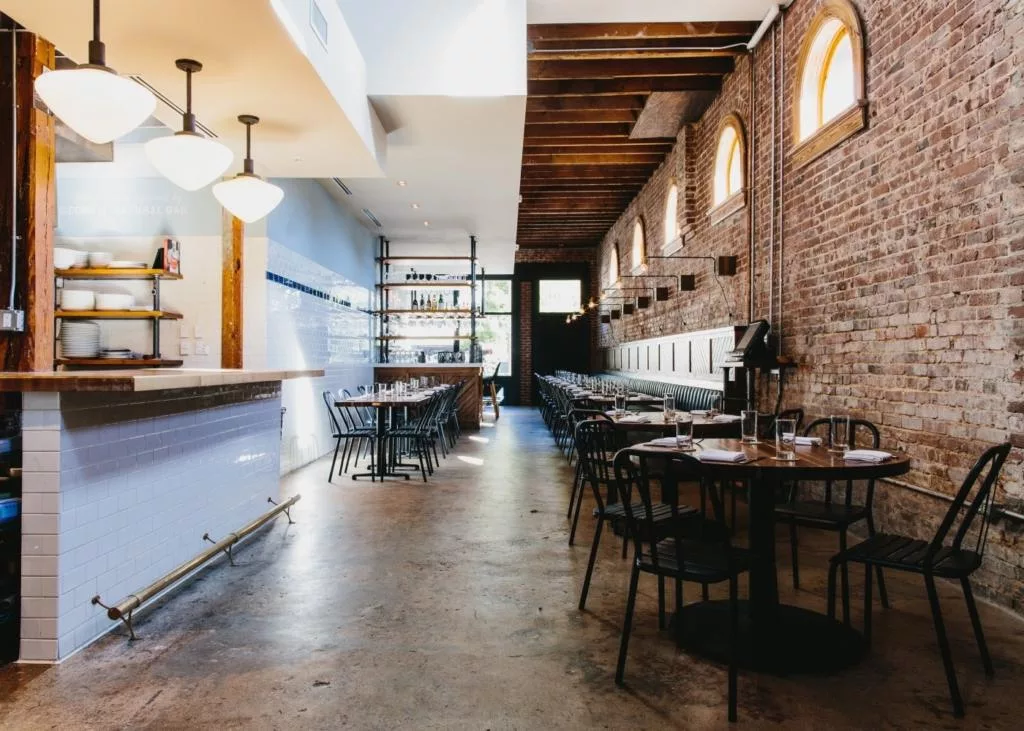Last updated on July 2nd, 2024 at 07:30 am
The list below features some of the architect and design firms whose works in Atlanta’s restaurants, cafes, and food halls have been well-received by the community. Some of these firms specialize in restaurant architecture while others are well-versed in a wide spectrum of design projects for diverse markets. These companies come in small teams and others thrive in collaboration with other design professionals. Overall, these firms represent professionals who produce functional and stylish restaurants, each tailored to the needs of a variety of clients. The following firms stand out for the innovative, creative, mission-driven nature of their designs, the intimate roles they play in the community, and for their success in producing award-winning and locally celebrated Atlanta dining spaces.
ai3
916 Joseph E. Lowery Boulevard, Suite 1, Atlanta, GA 30318
ai3 is a collection of designers, architects, artists, and thinkers striving to create meaningful spaces born out of clients’ stories. Inspired by the teamwork that went into designing the Georgia Aquarium, this steadily growing and inter-disciplinary firm has one of the most widespread influences on Atlanta’s dining scene today. ai3 is led by Lucy Aiken-Johnson, Patrick Johnson, Dan Mass, and Principals Ann-Marie Lima, Kerry Wittwer, and Kellon Minor, many of whom are members of the American Institute of Architects (AIA) and are Leadership in Energy and Environmental Design (LEED) Certified Professionals. The firm believes that helping clients narrate their own stories allows the clients to create verbal blueprints for the desired form and function of their properties. The process emphasizes the firm’s client-focused approach. That process ensures that clients are the true “owners” of their projects. Using this philosophy, the firm has successfully completed designs for some industry giants, including the Coca-Cola Company, Microsoft Atlanta, the Atlanta Sports Complex, Central Atlanta Library, Atlanta Hawks, and the Atlanta Country Club. As a restaurant architect, the firm has completed 48 projects, primarily in the Atlanta area, and nearly all of them in the state of Georgia.
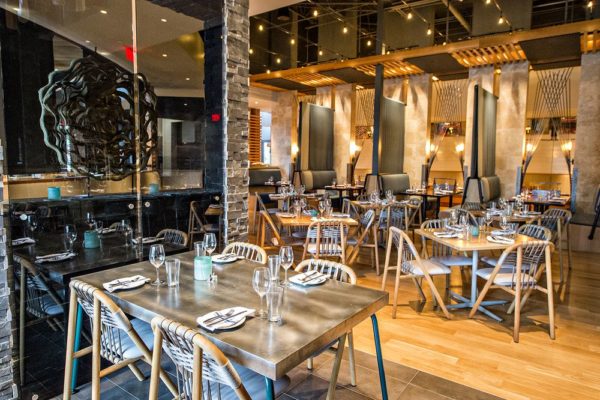
ai3 collaborated with Peace Design on the design for Lure, a fresh seafood restaurant in midtown Atlanta. Inspired by the commercial fishing industry, Lure’s entryway is a landmark in and of itself—a giant, 200-year-old anchor salvaged from a ship that once sunk to the bottom of the Boston Harbor. Inside, the restaurant brings together maritime elements like wood and metal, rough-hewn timbers and beams, an antique wooden pulley and chain suspended from the ceiling, birch wishbone chairs, brass portholes, and fittings, and a lamp made out of a piece of a World War II bomber. Outside, wooden shutters separate diners from the bustling sidewalk and help maintain the sensation of being in a ship’s hull. Another collaboration was for the Drift Oyster Bar project, an upscale—yet not uptight—restaurant that features a design inspired by the culinary choices that it serves. With a vintage oyster can collection, suspended oars, custom steel sculptures, sail cloths, and twinkling lights, Drift sets the tone as if diners are enjoying a seaside vacation. Another collaborative project in midtown Atlanta, The Globe, features a giant chalkboard and globe lights in a European bistro-style eatery, prompting the name of a whole new aesthetic, “schoolhouse chic.”
CCS Architecture
44 McLea Court, San Francisco, CA 94103
CCS Architecture was founded in 1990 by Cass Calder Smith. Smith is now joined by other partners, Barbara Vickroy, the Director of Interior Design, Melissa Werner, Director of Operations, and Tim Quayle, Director of Architecture. Although its two locations are in San Francisco and the other in New York City, many of its projects can be found across different cities and regions in the US, including Atlanta. The firm offers architecture and interior design services for a variety of public and private structures. The Cass Calder portfolio is composed of award-winning residential designs but it also has outstanding works for the restaurant and hospitality sector. The firm is driven by creative exploration, common sense, experience, and a desire to bring each project to its full potential. Its creations exhibit exceptional spatial and material qualities, setting its style apart from other design firms. Most importantly, the company is known for its client-centered approach to design.
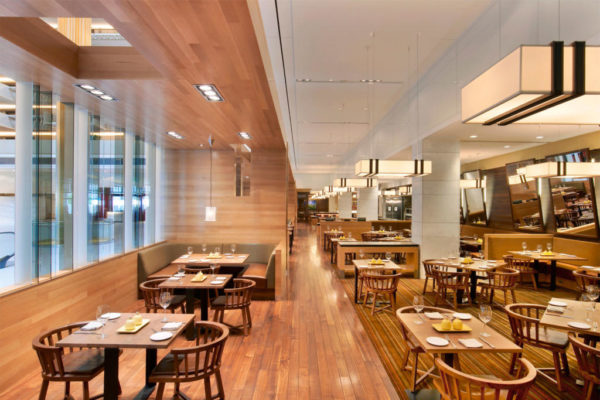
The firm’s East coast and West coast locations allow it to expand its services across other regions, including Georgia’s capital, Atlanta. One of its major contributions to the city is its work for Hartsfield-Jackson Atlanta International Airport’s dining and hospitality section where restaurants like Grindhouse Killer Burgers and Argo Tea operate. The design also accommodated spaces for a media tower, projection screen, and several charging stations. The firm also designed a high-end project that earned the Best Restaurant Design at the Hotel Architecture + Design (HA+D) Awards Ceremony in Hong Kong. The firm followed a three-fold approach, consisting of a restaurant, lobby bar, and cafe area inside the 1967 Hyatt Regency Hotel. The modern, clean, and timeless spaces were designed to give guests a luxurious dining experience. The restaurant, Sway, used to be a bare extension of the hotel lobby. Deep renovation by CCS Architecture turned it into a chic, all-day restaurant with an exhibition kitchen and a wine bar. The interior is cozy, with warm lighting and sophisticated furnishings.
DeCarlo and Hawker
2470 H. L. Williams Drive, Atlanta, GA 30317
This firm is the combined creative efforts of husband-and-wife team Michael DeCarlo and Sara Hawker. DeCarlo, who started his practice in 2009, has experience working with Atlanta’s Summerour & Associates, where he specialized in detailed and high-end projects. A licensed architect since 2000, he studied at Georgia Tech and took part in an intensive program in Versailles. He is a board member of Atlanta’s historic preservation Easements Foundation. Hawker, who began working in the firm in 2013, specializes in restaurant design and has collaborated on several projects with other designers on this list. She studied architecture at the Savannah College of Art and Design. DeCarlo and Hawker have partnered with many other designers in the city to deliver local classics that may soon become national landmarks for being a big part of the region’s historic community. Its projects, such as the Marrakesh, Bellina, Biltong Bar, Ton Ton, and Botiwalla, can be found in the Ponce City Market.
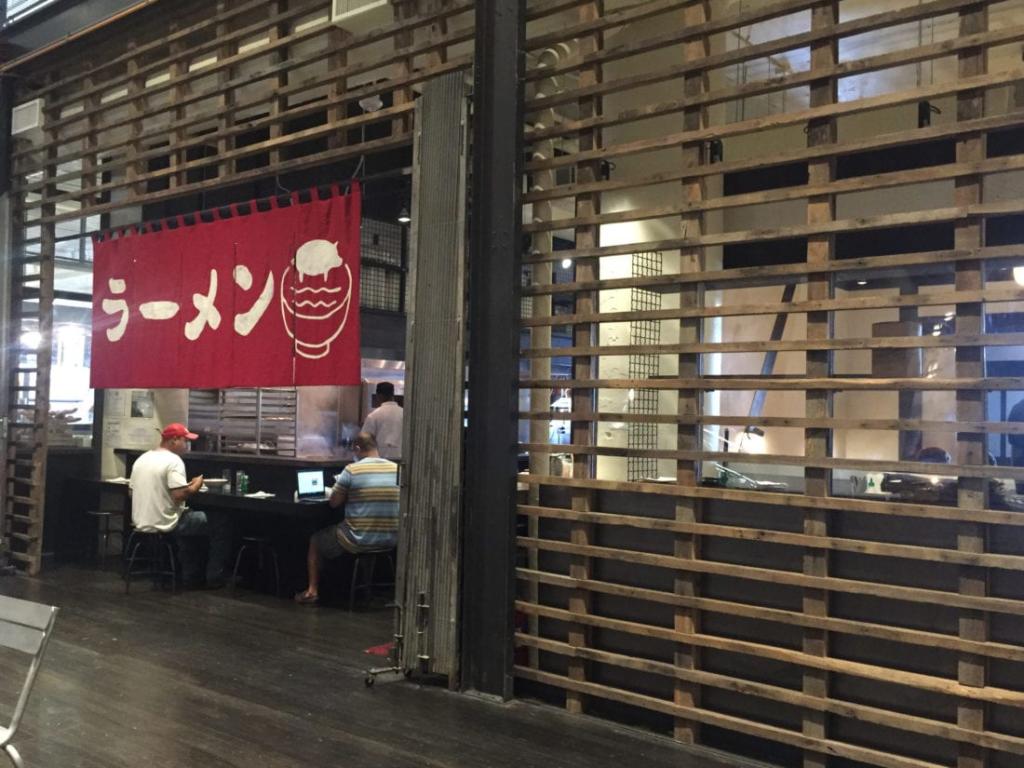
The Ponce City Market is a mixed-use property located in a historic neighborhood in Atlanta. The complex is known for its local stores, restaurants, a food hall, office and boutique spaces, and even some residential units. At 2.1 million square feet, the building was placed on the National Register of Historic Places in 2016. Now, investors and owners want to transform Ponce City Market and make it one of the nation’s famous food halls, along with Pike Place in Seattle, San Francisco’s Ferry Building, and the Chelsea Market in NYC. The diverse design elements for each enterprise in the food hall gave the firm an opportunity to showcase its versatility and its understanding of design. For Marrakesh, for instance, the firm designed a brightly lit, Mediterranean-chic mini-market with colorful tiles decorating both the floors and ceiling and wooden baskets tucked in every nook and cranny. For Bellina, the firm designed a charming Italian bistro with deep hues, rich textures, and soft light. Biltong Bar features its sleek upholstery, warm glow, and sophisticated brick walls. Ton Ton, a ramen restaurant, is characterized by its traditional, decorative wood paneling; and Botiwalla, an Indian street food grill peppered with all the decorative details of a bustling city street. Long-term goals for this overall property include rooftop gardens to enable local restaurants to grow their own food.
Habachy Designs
351 Peachtree Hills Ave NE, Suite 422, Atlanta, GA
Composed of a team of interior designers, architects, and graphic designers, Habachy Designs introduces a high-caliber standard in conceptualizing residential and commercial spaces for the region’s most sophisticated clients. The firm is led by its principal, Michael Habachy. As a team that offers interior architecture, interior design, and branding the company has produced award-winning projects that have caught the attention of many industry organizations and publications. In 2019, for instance, Veranda Magazine and ADAC awarded the firm with the prestigious Southeast Designer of the Year award. Local, national, and even global publications have also featured many of the firm’s works. Atlanta Magazine, Home, InDesign, Atlanta Homes and Lifestyles, The Atlantan, among others, highlighted the company’s ability to come up with creative, highly sophisticated, and timeless interiors and architectures.
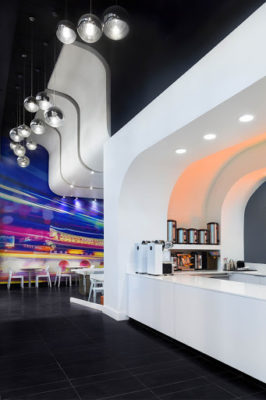
Since its founding over fifteen years ago, the company has built up a commercial portfolio that showcases award-winning hotels, nightclubs, spas, and restaurant interiors. One of its most innovative projects as a restaurant designer is the East Wave Cafe in Downtown Atlanta. Its eccentric use of shapes and patterns introduces a whole new experience for dining and socializing. Its unique design won the Georgia Chapter Design Excellence, Bronze Award, given by ASID, the American Society of Interior Designers. Other projects found in Georgia are commended for their nod to luxury. The firm’s Viande Rouge Steakhouse as well as a Korean restaurant, Breakers, design concept introduces the firm’s ability to create elegant interiors that pay tribute to the unique cultural aspect of every project.
Johnson Studio at Cooper Carry
191 Peachtree Tower, 191 Peachtree Street NE, #2400, Atlanta, GA 30303
Johnson Studio at Cooper Carry, an Atlanta-based firm chosen for its achievements in restaurant design, focuses on the holistic aspects of quality dining: cuisine matters, but so does each element of the space in which we eat. The Johnson Studio recognizes that the strength of the setting can elevate the dining experience from a tasty meal to a significant and long-lasting memory of an entire occasion. Focusing on the dynamic between food and place — “the emotional connection between what we eat and where we eat it” — is central to this firm’s success. With 25 years of experience and over 500 project completed, The Johnson Studio at Cooper Carry has created important, unique, and memorable restaurant aesthetics throughout the country.
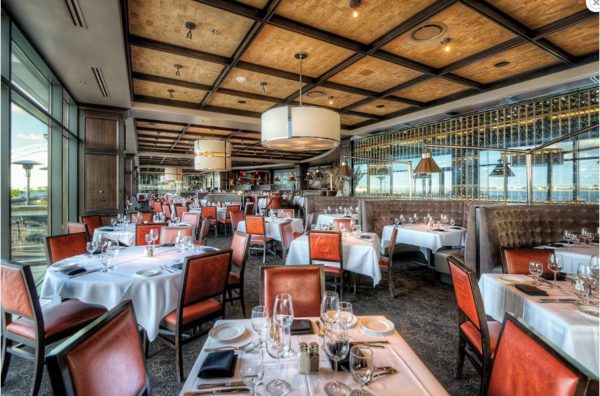
The KR Steakbar in Atlanta, a new-age Italian steak bar specializing in small plates, was designed to promote a feeling of neighborliness. Located in a 30-year-old former designer showroom, the restaurant features an open-floor plan and glowing walls decorated with walnut wood strips that create a spacious, open mood. A rectangular bar is positioned over cozy, leather lounge seating, which complements the friendly nature of the elegant and exposed kitchen. In Sandy Springs, Kaiser’s Chophouse on Roswell Road provides high-end cuisine in a space designed by The Johnson Studio at Cooper Carry. The Chophouse features a contemporary aesthetic with traditional elements, from an open bar to seating areas divided by a cozy library wall made up of bookshelves. Friendly booths for intimate dining are punctuated by wooden tables. Described as “London chic” by the client, the restaurant is filled with friendly booths and classic wooden tables.
Meyer Davis Studio
180 Varick Street, Suite 404, New York, NY 10014
Although based in New York, Meyer Davis Studio has established its presence in Atlanta through multiple commercial projects that helped shape the local scene. Bar Margot, King & Duke, and St. Cecilia are some examples of its works in Georgia. Meyer Davis was founded in 1999 by Will Meyer and Gray Davis. Since then, the firm has received national and international recognition for its work in hospitality, specifically restaurant settings and workplace designs. The firm is remarkable for the bold creativity of its multiple restaurant designs. With each project, the firm seeks to tell a story using space, form, texture, and light; each design creates a “visual experience that seeks to compel and inspire.” Meyer Davis has worked with renowned restaurateurs and celebrity chefs including Michael White, Andrew Carmellini, Daniel Boulud, Tom Colicchio, Jean-Georges Vongerichten, Josh Capon, and Ford Fry. The firm’s work with restaurant settings has received recognition and praise from Interior Design’s Best of Year Awards, Boutique Design’s Gold Key Awards, The International Hotel & Property Awards, and the Hospitality Design Awards.
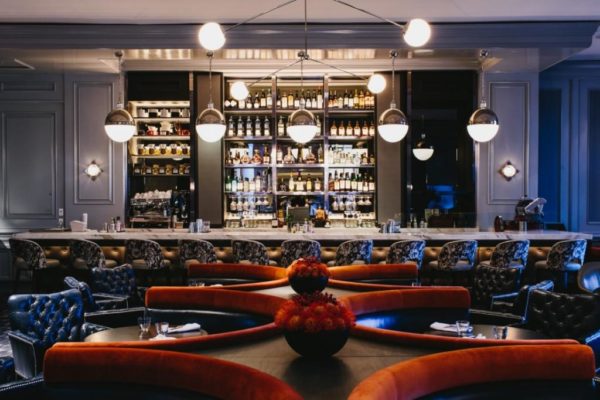
Atlanta’s St. Cecilia is a 10,700-square-foot establishment modeled after European bistros to offer a coastal Italian vibe. The design includes a creamy and natural color palette with ocean blues that evoke relaxed, seaside gazing. Its quirky details lighten the mood—the space has no straight walls, maintaining an open ambiance with tons of natural light. The design relied on local and natural materials including hardwood floors, industrial-style exposed steel, and custom leather barstools. Antique mirrors allow views of a giant oak and brass bookcase decorated with small treasures, all reminiscent of an Italian seaside. Bar Margot, another design by Meyer Davis, is located within the Four Seasons Hotel in Atlanta. CovetED called it a bold and whimsical design inspired by Wes Anderson’s film The Royal Tenenbaums, containing wit and moodiness, while somehow managing to incorporate the “cool charm” of modern Southern hospitality. Another Atlanta restaurant by Meyer Davis, in collaboration with NO Architecture, King & Duke was built around open-fire cooking. Central to the design of the restaurant are a 24-foot open-fire hearth, coal-burning grills, one wood-burning grill, and an assortment of rotisseries and Dutch ovens. King & Duke is located on West Paces Ferry and Peachtree.
NO Architecture
489 Edgewood Avenue, Atlanta, GA 30312
NO Architecture is a one-man firm established by Tim Nichols, a veteran architect that has worked with the internationally renowned design firm, HoK. While a full-service architectural and interior design company, NO Architecture focuses on creative and immersive spaces, including restaurants and workplaces. Popular for the design of the Atlanta restaurant The Optimist, some of NO Architecture’s other notable works include the Joystick Gamebar, The Lawrence, and Double Zero. Tim Nichols teaches interior design as an assistant professor at Georgia State University and facilitates art tours throughout Europe, including Paris, London, and Barcelona. Named after the limitless possibility of a blank starting page of any truly creative and brand-new design, the firm’s goal is the “confrontation with the unknown”. Courage and conviction, rather than the safety of preconceptions, drive each project. Central to the firm’s success is collaboration—the best antidote to preconceptions. The firm was founded in 2008 and its portfolio is a product of its independent practice as well as collaborative works with other industry leaders. The firm’s strongest presence in Atlanta is represented by its work in restaurants. NO Architecture collaborated on the design of a number of local establishments, including BeetleCat, Superica, and King & Duke.
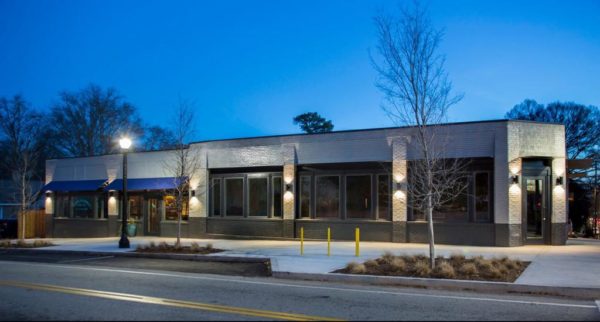
The firm’s most talked-about project in Atlanta is The Optimist & Oyster Bar, a dual project in which Tim Nichols worked in partnership with famous chef Ford Fry. It was also a collaborative effort with fellow design firm Smith Hanes and builder Ben Lassbeck. The location, a former meat distribution warehouse, was transformed into a classic seafood restaurant that serves sustainable cuisine baked in a wood-burning oven. The restaurant, located in Midtown West at Howell Mill and 8th, includes 16-inch-deep windows made of steel, oak ceilings, steel shelving, and decorative textiles that soften the decor. The new design opened up the restaurant to bring in an abundance of natural light and an unobstructed view of its surrounding landscape. The Optimist was declared Best New Restaurant of 2012 by Esquire. Adjacent to The Optimist is the Oyster Bar, the more informal companion establishment that features an outdoor patio.
Place Maker Design
1000 Circle 75 Parkway, Suite 400, Atlanta, GA 30339
Outstanding for its multiple restaurant architecture and design projects across Georgia, Place Maker Design is one of the city’s most preferred professionals for this market sector. Since its founding in 2004, Place Maker Design has worked with large and medium enterprises to complete projects that embody the firm’s philosophy: good design will always come first. The company makes sure that projects—regardless of size or value—enjoy a high quality of service and expectations. The firm is led by principal architects, Tim Vaccaro and Kevin Maher. Together, they have delivered retail, residential, and other commercial spaces to the region’s growing markets. As restaurant architects, the firm’s designs have not only changed Atlanta’s hospitality sector, they have created award-winning landmarks that will be remembered for generations. The firm’s work for a new city center in Alpharetta, for instance, won the 2018 Development of Excellence award from the Atlanta Regional Commission. This project houses eateries, shops, and other establishments that offer locally-celebrated dining and shopping experiences.
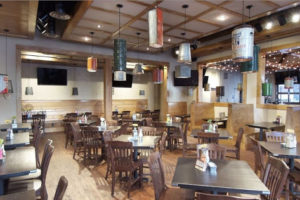
In Georgia, the company has completed multiple projects for the restaurant sector. Like its work in Alpharetta and other cities in the region, these dining spaces have become a part of the city’s unique local experience. The Bazati Hall, for instance, was designed to provide a haven for locals to enjoy good food and good company. Additionally, the firm also worked with Tin Lizzy’s Cantina to design five locations across the region. These restaurants feature architectures that exude a “modern, casual, and energetic” atmosphere—the restaurant’s signature vibe and the main reason why it has become a constant in the local dining experience.
Seiber Design
680 Murphy Ave. SW • Building 4000, Suite 4210, Atlanta, GA 30310
Founded by Ed Seiber in 1995, Seiber Design is a studio of architects and interior designers. Its primary market comes from the private sector and other commissions for individual project owners. The firm was selected for its long list of popular restaurant projects completed in Atlanta. Backed with a solid foundation in architecture, Ed Seiber began his solo practice in designing high-volume and upscale dining. In 1996, Stacey Kirby joined the firm and became a partner by 2005. The firm works on designs tailored for restaurants, stores, businesses, and residences. Seiber Design’s motto is “everything matters.” Every detail of the design is deliberately selected, then carefully fitted into place. The firm’s Atlanta-based project, Proof and Provision, received the 2013 Bronze Design Excellence Award in the Restaurant Category from the Georgia Chapter of the American Society of Interior Designers. For its work on Ray’s on the River, the firm received the 2008 Gold Award in Design Excellence.
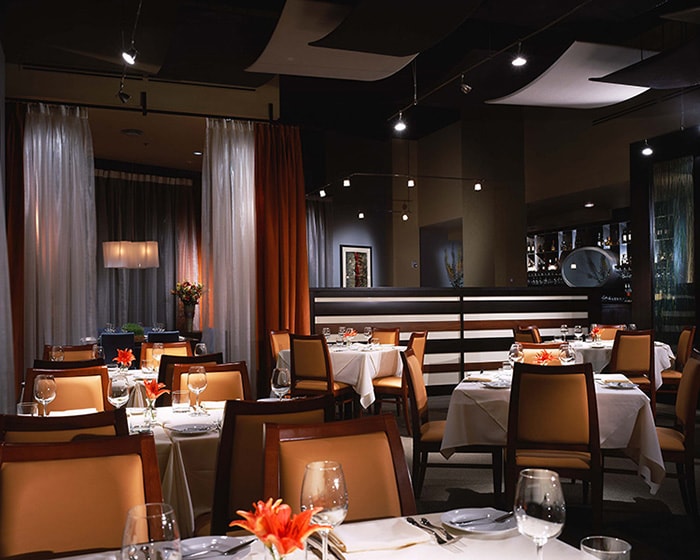
As a project that earned the Silver Design Excellence Award from the Georgia Chapter of the American Society of Interior Designers (ASID), Eugene, is one of the firm’s most notable restaurant designs. With an area that covers 3,400 square feet, the building is a high-end and contemporary restaurant in The Aramore Condominiums near Atlanta’s Peachtree Battle Shopping Center. The design exudes a cozy and elegant ambiance due to its warm colors, deep textures, and sophisticated lighting. Another award-winning project, Ray’s on the River, occupies an 11k-foot structure right at the edge of Atlanta’s Chattahoochee River. The building was originally a seafood restaurant. After undergoing a full interior and exterior renovation, the building now features a classic supper club atmosphere, characterized by modern details and striking, decorative focal pieces. At the client’s request, the firm made sure that the design honors the river and put it at its center stage, an element meant to enhance the patron’s dining experience.
Smith Hanes Studio
949 West Marietta Street NW, Studio X-113, Atlanta, GA 30318
Smith Hanes Studio collaborated on The Optimist, Esquire’s Best New Restaurant of 2012 and one of the most popular dining spots in town. This Atlanta-based firm favors projects involving spaces where people live their lives and entertain themselves. Working on everything from restaurants and cafes to houses and art galleries, the firm aims to make a difference in the way its clients’ experience their lives. Smith Hanes Studio seeks out clients who excel in their own fields and who value the process of creation — entrepreneurs, chefs, business owners. His gallery design for legendary art dealer Fay Gold reveals the precision common in his designs, coupled with an elegant yet comfortable aesthetic. In particular, Smith Hanes is praised for his involvement in Atlanta’s restaurant community, and his work has been featured in Luxe and Bon Appetit. Two of his collaborations, The Optimist and Watershed, are community classics.
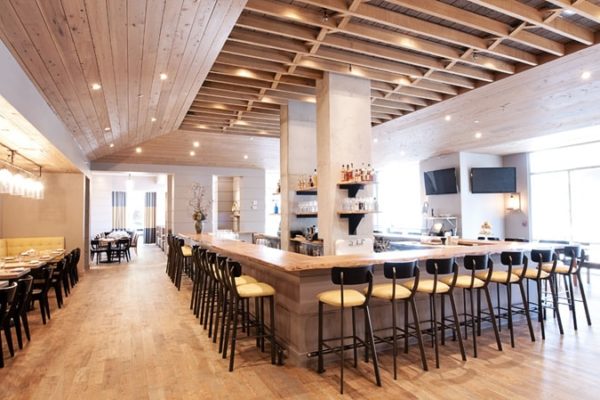
Le Fat was modeled after a fusion of Parisian bistro and pre-WWII Hanoi — a particularly hopeful and stylistic time for French Indochina. The cuisine served by chef Guy Wong is known for its evocative aromas, and the combination of culture and quaint Parisian style makes this a truly unique restaurant within Atlanta. The setting is peppered with classic millwork elements, a Zinc bar, and fruitwood tambour columns. The lighting is a testament to the resourceful and conscientious nature of the design, with entirely handmade or found lamps, all belonging to the era that inspired the decor, illuminating the charming interior. Completing the French bistro aesthetic is a mirrored bar reflecting the hand-painted decorations on the walls. Another of the firm’s collaborative designs is Watershed on Peachtree, which Zagat has mentioned in 23 articles, such as “The 12 Best Brunches in Atlanta,” “Best Fried Chicken in Atlanta,” “Where to Eat Brunch,” and “This Week’s Best Food Deals and Events in Atlanta.” Zagat gave Watershed a 4.2 for its cuisine and a 4.3 for its decor, described the ambiance as “refined yet hip,” and singled out the “trendy bar as helping to fuel a romantic, cool vibe.”
Square Feet Studio
154 Krog Street NE #170, Atlanta, GA 30307
Square Feet Studio is not only known for its award-winning restaurant designs in Atlanta, but also for the thoughtful nature of its projects. The firm goes out of its way to honor the city’s history and celebrate the Southern spirit through timeless and culturally relevant projects. Led by founding principals John Bencich, Vivian Bencich, and partner Blake Burton, the firm offers architecture, planning, and design services to a diverse market. The firm prioritizes environmentally sustainable resources in all matters of design, in order to minimize environmental impact while maximizing long-term quality and function. Many of its works have been featured in Zagat, Retail Design Blog, Hospitality Design, Curbed Atlanta, Atlanta Business Chronicle, Vogue, Imbibe, and many more. Although the firm excels in a number of project types, some of its most high-end and highly-acclaimed designs exist in restaurant settings, with projects found across the city.
“I have always been fascinated with making things and knew I wanted to be an architect since I was in high school. Upon completion of my degrees at Georgia Tech and working in the profession for 9 years, my wife and I launched Square Feet Studio so we could have a practice in which architecture, planning and interior design were inseparable. That was not the status quo at the time. The disciplines were siloed and firms specialized or has separate “studios” doing planning or interior design. We thought that was unnatural. In the 17 years we’ve been practicing together, we’ve found that our integrate approach allows us to have more honest conversations with our clients because we are discussing their needs in terms of how people respond to complete experiences rather that in the unnatural buckets created by the profession. We can talk about the traffic patterns, the parti and the window treatments in the same conversation. ” – John Bencich
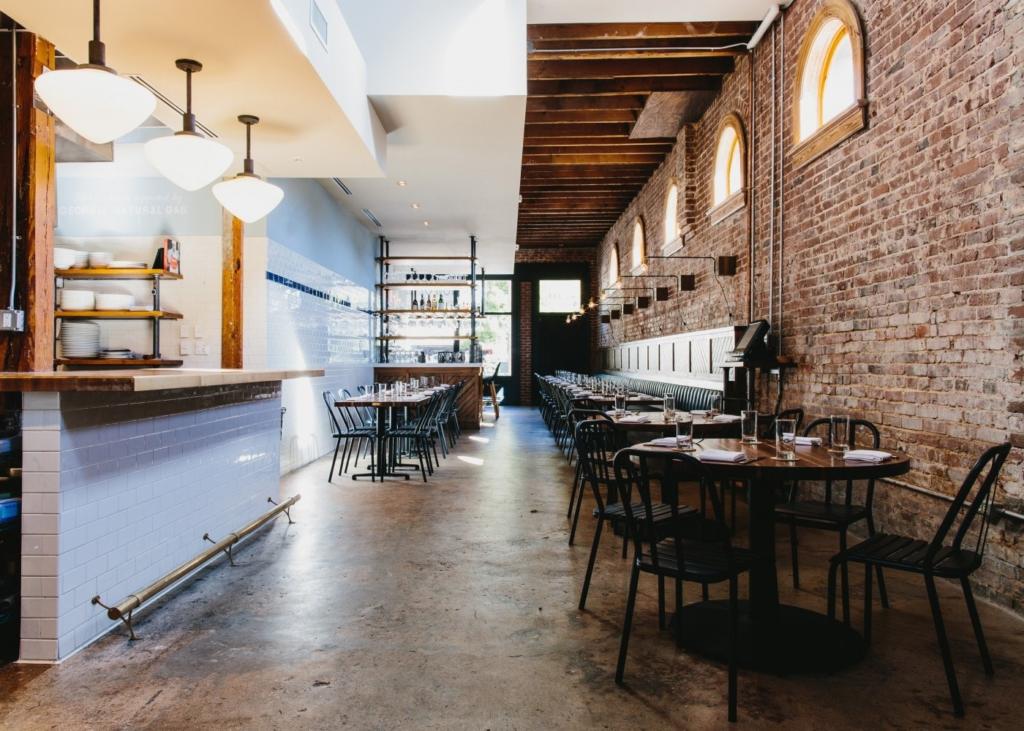
Staplehouse started as an underground supper club founded by Ryan and Jen Hidinger. Located in a historic brick building, the space was once a general store. After it was renovated, the building became an open-kitchen restaurant with a cozy outdoor space, walls coated in ivy, and a brand-new dining patio with a prep kitchen built in the shadows of a large oak tree. A private dining area with scenic views sits above the main level, and a side room houses The Giving Kitchen, a nonprofit dedicated to supporting local, struggling restaurants. The design for Staplehouse was the grand prize winner of the 2016 Contract Magazine Inspirations Award and was the winner of the 2016 City of Atlanta Urban Design Commission Award of Excellence. Another Square Feet Studio project, White Oak Kitchen, won the 2012 Atlanta Downtown Design Excellence Award and the 2013 Award of Merit from the International Interior Design Association (IIDA), Georgia’s Best of the Best in Hospitality Design. Inspired by the client’s appreciation for high-quality whiskey, the restaurant is decorated with barrels, steel straps, and oak slats. Charred wood panels warmed by dim lighting add a layer of sophistication. To elevate the patron’s dining experience, the building showcases a stunning view of the Atlanta skyline.
